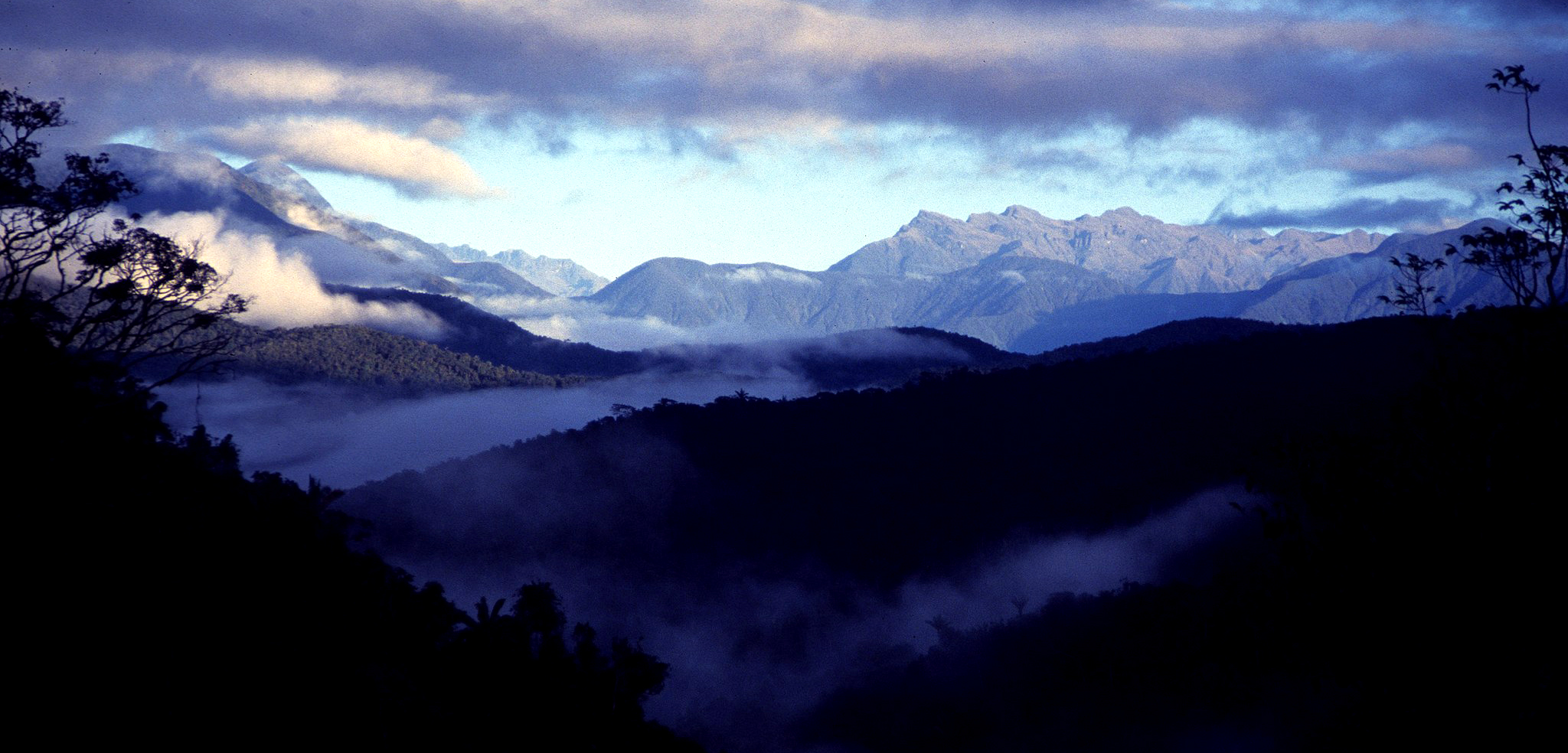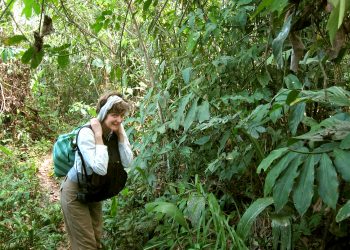A New Generation of Scientist Fearless About Relevance: EarthDesk Conversation with Pace Professor Anne Toomey

Madidi National Park, Bolivia. By Michael Kessler, Schweiz [CC BY 3.0], via Wikimedia Commons
In a recent interview on NPR’s Science Friday, Sue Desmond-Hellmann, CEO of the Bill and Melinda Gates Foundation, talked about the challenge scientists face when communicating the outcomes of research to the public, and strategies for molding opinion, such as influencing religious and political leaders to serve as community exemplars. Her advice for scientists contained cautions as well:
What I tell scientists is get out of your bubble, get out of your lab, walk out of your lab, meet your neighbor, be involved in your community . . . and always ask yourself, “What if I’m wrong?” . . . And know that someday there will be new information that changes the best scientific information for consumers. And so, have the humility to be as excited as you should be about new discoveries and new science, but also know there’s a consequence if you’re wrong. And to leave room for further study, further evolution. . . be humble enough to know that three years, five years, ten years from now, you may be giving different advice.”
It is certain that when Dr. Desmond-Hellman speaks, science listens. To date, the Gates Foundation counts more than $41.3 billion in committed funding. Still, a CEO of a leading philanthropy coaching scientists about the importance of community is a decidedly contemporary construct. In the 1980s, I served on the science panel of an environmental research foundation. A non-scientist interested in policy, I recommended we amend our solicitation to include policy proposals that required new science. Other panel members – 15 research scientists from Penn, RPI, MIT, Columbia, Stony Brook and more – unanimously objected. Introducing policy matters into scientific research would only contaminate the science, they said. To answer scientific questions a researcher should stand apart from, not inside of, community politics. It was an opinion representative of the times.
But back here in the 21st century, issues such as climate change, collapsing biodiversity, pandemics, and water and food poverty have inspired a new generation of scientist, well along in bursting the bubble, getting out of the lab, and seeking scientific answers not only to scientific questions, but policy questions as well.

Anne Toomey hauling a load of bananas, San Jose, Bolivia.
One such scientist is Anne Toomey, assistant professor in the Dyson College Department of Environmental Studies and Science here at Pace. Her university bio describes her as “an interdisciplinary conservation scientist who is interested in how people connect to their natural environment and the role of science in supporting that connection.” Anne’s PhD in human geography from Lancaster University in the UK “sought to understand local perceptions of scientific research in the Bolivian Amazon through participatory research with indigenous communities, park guards and biodiversity scientists.” Her blog, Science and the Community – Adventures in the Bolivian Amazon, should be required reading for any student, or senior scientist for that matter, who wants to learn more about the challenges of matching research pursuits to community needs, concerns and customs. (Though I don’t know how many will be traveling the rainforest, “hopping on my motorcycle and going from place to place to disseminate my PhD work.” Learn more on Anne’s blog.)
Anne’s passion for that sweet spot where science, community and policy meet is evident in her research, teaching and conversation. We conducted a lively email exchange on the topic.
John Cronin: Here in the U.S., we are experiencing a new age of science and scientist, of which you are part, where policy and community needs are accepted as a legitimate method for formulating research questions. Compared to a generation ago, it is a fresh and growing scientific culture that believes research for the purpose of making lives better is respectable and desirable, and that such pursuits do not make the science less pure. What differences do you see in the emerging scientific cultures of the U.S. and the U.K., where you earned your PhD?
Anne Toomey: The UK context differs from the US context, and a lot of that has to do with the UK system of higher education, where disciplines are starkly siloed off from one another. Typically, students pick their area of specialty at age 16, so when they start their undergraduate career they are already declared in Anthropology or Biology, etc. As a result, they are steeped in the knowledge of their discipline, but not always exposed to other ways of thinking — in contrast to the US “liberal arts” education. I met some PhD students who were twenty-two years old and had studied very little outside of their area of focus and had never held a non-academic job (even waiting tables). As such, there was a lack of basic understanding of the social sciences from natural scientists, and vice versa. And policy was considered to be a completely separate realm, where good science should simply be “inserted” into the equation.
Cronin: Do you think the young scientists with whom you work view the link between science, policy and decision-making differently than have past generations of scientists?

Anne catching up during down time in a Tsimane-Moseten community.
Toomey: Being a young researcher myself, I struggle a bit to answer this question. However, during my PhD in the UK I was keenly aware of the divide between the younger and older generations of researchers. While the older generations seemed very reluctant to step outside of their disciplinary silos, the younger Masters and PhD students were constantly talking about how their research could be used in policy or community-based decision-making. Once I organized a faculty and student discussion group on the subject of “Partnerships between local and scientific knowledge”, but the only attendees were students. Later, during a social coffee meetup, a senior ecologist in my department admitted to me that he found our discussion group a bit of a waste of time. He said something to the effect of “natural scientists do science, and the role of the social scientists is to translate that knowledge,” which to me demonstrated a willful ignorance not only of social science but also of the policy process in general.
Cronin: In the October 27 EarthDesk we reposted a response by you and your colleagues to a commentary published in Nature Ecology & Evolution that suggested evidence is not routinely sought or used in conservation decision-making. What did you learn from all the response?
Toomey: I’ve been writing and speaking about the science-policy interface in conservation for a few years, and I found it interesting that this comment generated more public interest and debate than anything I’ve put out in the past, especially on Twitter. Reading through the various tweets and other correspondences since publication, it appears that readers strongly identified with the importance of pointing to the complexity of the policy process as the way forward. As one tweeter wrote, “let’s roll up our sleeves and embrace the messy hodgepodge of human decision-making!” I think the tide is beginning to shift in terms of scientists being more active in policy and management arenas, and more people are realizing that maybe that’s not such a bad thing.
Cronin: There is great controversy about a new era of government suppression of information — for example, the removal of climate and pollution data from agency websites, and the defunding of government-sponsored research. Recently, the EPA has taken the unprecedented step of removing its own grantees from its science advisory board, mainly university scientists. The term “war on science” is more known than academic terms such as “evidence-based conservation” or “evidence-based decision making” but the discussion is necessarily all of a piece — we could call the perceived government “war on science” a government “war on evidence.” What is the teaching challenge in the midst of this trend?
Toomey: I really think it depends on the political “norms” of the given institution, the student body and the sociocultural contexts in which they operate. For example, conversations about the science behind climate change in New York City classrooms will be different than those in Kentucky, though ultimately the first step as a teacher is to seek a personal connection between students and the material discussed in class, and additionally to understand the psychology of acceptance vs. denial. Learning is not typically shaped by facts – brains are not empty vessels into which knowledge is inserted. Rather, new knowledge must be accommodated into a complex arena of existing beliefs, experiences and sociocultural norms. In cases where new information contradicts previous understandings, care must be taken to make the process as gradual as possible and to build in safeholds and support for students – otherwise the teacher risks completely turning the learner off or alternately pulling out the rug under their feet, which could be traumatic if one’s entire social circle holds different beliefs. I personally believe the best way to educate is not so much to tell but to show – to bring students and community organizations together, to get students out into the field to see things with their own eyes. This type of learning is less about teaching what I know, and more about letting students come to discover and know the world on their own terms.
